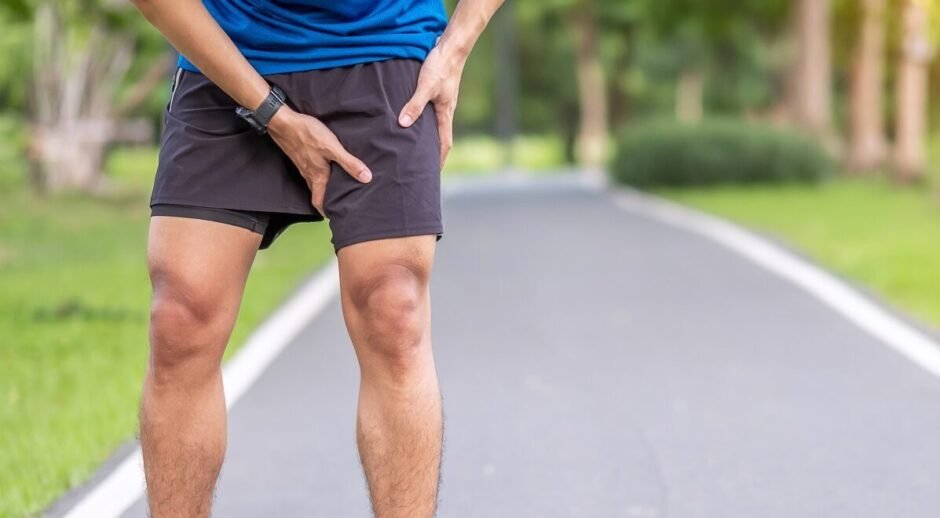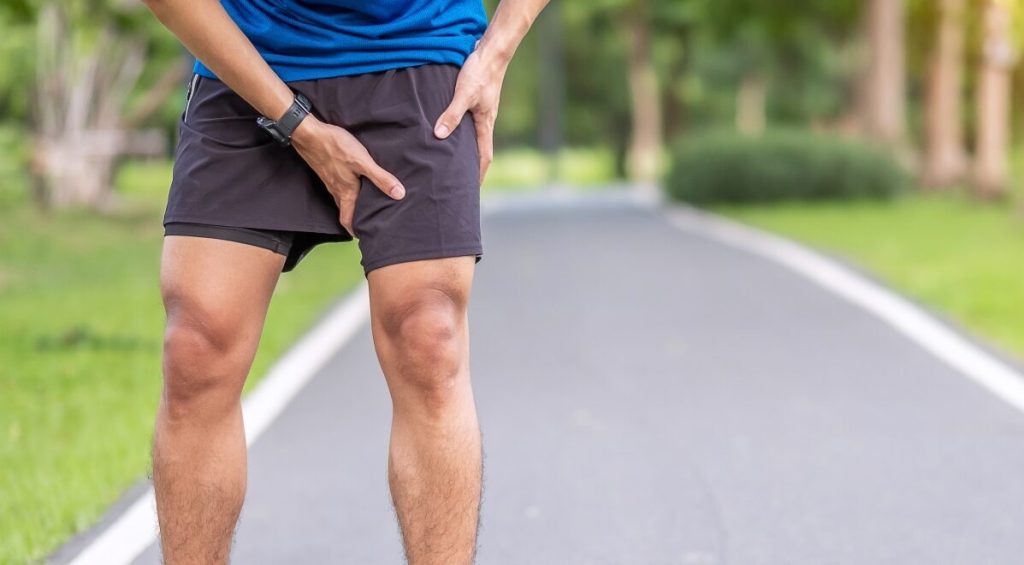Rehabilitation Of Adductor Related Groin Pain In Athletes

Groin strains are a common sports injury, estimated to account for 10% of all sports injuries. Sports involving running, changing direction, and kicking put the most strain on the groin area and are most susceptible to these injuries.
This article focuses on adductor-related groin strains, which affect the adductor longus tendon and are the most frequently injured amongst the groin tendons.
Causes and Risk Factors
There are several risk factors that can contribute to adductor-related groin strains:
- Previous groin injury
- Reduced pre-season hip adduction strength
- Limited hip abduction range of motion
These risk factors lead to overuse and straining of the adductor longus tendon over time while participating in sports.
Signs and Symptoms
Some key signs and symptoms of an adductor strain include:
- Pain and weakness with resisted hip adduction
- Limited passive hip abduction range of motion compared to the uninvolved side
- Tenderness when palpating the adductor longus tendon
- Pain occurs only with activities that stress the abnormal tendon, depending on whether it is an acute or chronic injury

Difficulty Managing Chronic Adductor Strains
If an adductor strain continues unmanaged and turns chronic, the condition becomes more challenging to treat. This happens frequently since most athletes continue playing through groin pain until it prevents them from participating in their sport. At this point, a prolonged period of rest and rehabilitation is required for recovery.
Early Detection
Detecting early warning signs is crucial to prevent a full-blown adductor strain injury:
- Tightness/stiffness during activity with no relief from stretching
- Loss of acceleration and speed when sprinting
- Discomfort when decelerating
- Loss of distance on longer kicks
Treatment Approaches
Overall, the best chance for complete recovery from adductor strains is active rehabilitation under the supervision of a skilled clinician.
Acute Phase Treatment
- Rest, ice, compression, and elevation (RICE protocol)
- Medication such as NSAIDs
- Electrical muscle stimulation (TENS units)
- Gentle soft tissue mobilization
- Pain-free isometric hip adduction strengthening
- Gentle passive hip range of motion stretch
Subacute and Chronic Phase Treatment
- Progressive strengthening and stretching exercises focused on the hip adductors, tailored based on pain response and aimed at restoring tissue tensile strength and elasticity
- Introduction of dynamic movements after initial strength gains
- Practice of sport-specific movements like running, pivoting, and kicking to gradually improve tolerance
Prevention Exercises After Recovery
- Agility drills during warm up to target muscle groups in the groin area
- Strengthening exercises like sumo squats and lunges
- Passive hip abduction stretches to increase range of motion and flexibility
The key exercises highlighted for rehabilitation are:
- Isometric hip adduction squeeze
- Abdominal crunches with ball squeeze
- Passive hip abduction stretch
- Unilateral cross country skiing
The article provides a good background and overview of adductor-related groin strains, including causes, symptoms, treatment approaches, and sample strengthening exercises.





